Mushrooms have captivated human curiosity for centuries, with their unique shapes, earthy aroma, and versatile culinary applications. Among the countless varieties that exist in nature, one particular group stands out: mushrooms with flat caps.
These intriguing fungi showcase a distinct characteristic that sets them apart from their cone-shaped counterparts. From the delicate coral fungi to the beautiful amethyst deceiver, flat-capped mushrooms offer an array of color and textures that entice both novice and seasoned outdoor enthusiasts.
In this article, we will dive into the fascinating world of mushrooms with flat caps, exploring their physical features and more.
List of Flat Topped Mushrooms
1. Clavariadelphus truncatus (Club Coral)
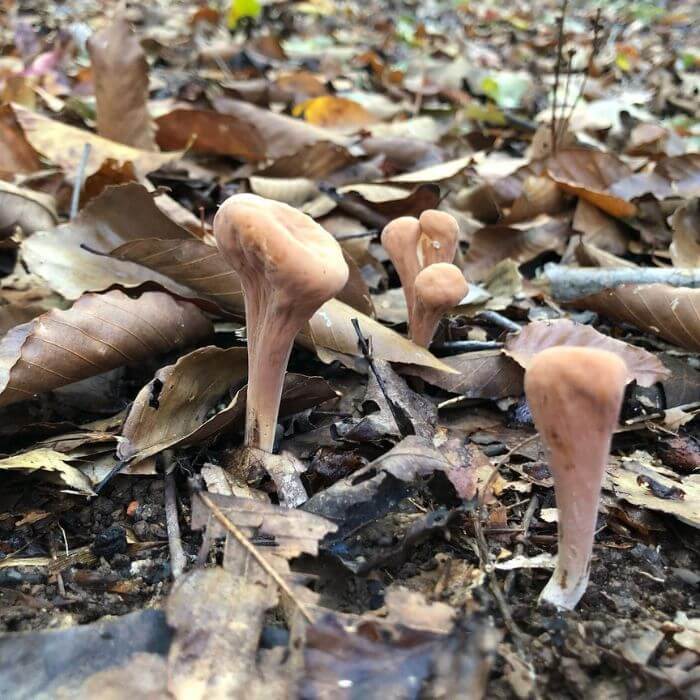
source:beckycanova
Clavariadelphus truncatus, commonly known as the club coral fungus, belongs to the family Gomphaceae. As its name suggests, this mushroom has a distinct flattened top, resembling a baseball bat.
It typically grows on the forest floor or grassy areas in tight clusters, and can be found in various regions around the world.
One of the distinguishing features of Clavariadelphus truncatus is its vibrant orange-yellow color. This eye-catching hue makes it easily noticeable amidst the greenery of its habitat.
Its fruiting body stands at about 4.5 inches and its flesh is white and spongy.
Are club corals edible? Yes, this mushroom with a flat top is edible. It has a sweet flavor that most foragers find appealing.
2. Chlorophyllum molybdites (Green-spored Lepiota)
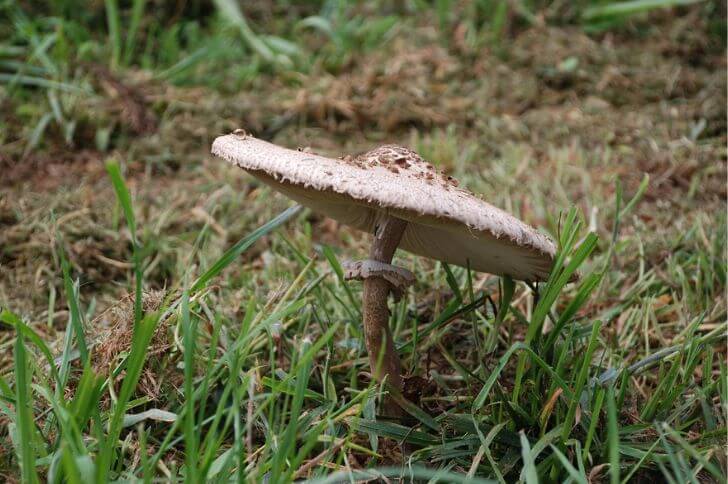
Chlorophyllum molybdites, also called green-spored Lepiota, is characterized by its large size and flat, umbrella-shaped caps, which can reach up to 11.8 inches in diameter.
They are typically white or pale green in color and have gills underneath the cap, which start off white and then turn green as they mature.
One distinctive feature of this flat top mushroom is its spore print, which is greenish-gray in color. This species is widely distributed across different regions of North America and can be found growing in grassy areas or lawns during the summer and fall seasons.
However, despite their appealing appearance, these mushrooms are inedible. It is worth noting that the green-spored Lepiota is often mistaken for the edible Parasol mushroom (Macrolepiota procera) due to their similar appearance.
3. Sooty Parasol
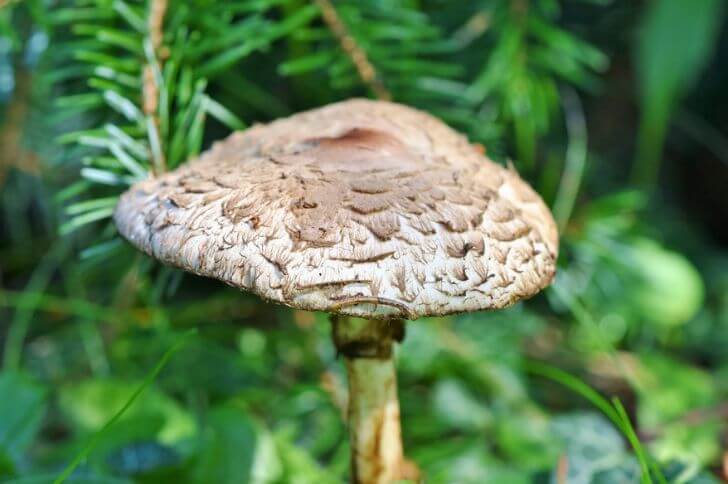
Scientifically known as Macrolepiota fuliginosa, sooty parasols are an intriguing species that belong to the Agaricaceae family. These fungi are renowned for their distinctive appearance and remarkable size.
With a flat or convex cap that can reach up to 10 inches in diameter, these flat topped mushrooms truly stand out among other mushroom varieties. The cap’s coloration may vary from creamy white to light brown, while its surface is adorned with intricate patterns of scales or warts.
Another characteristic that differentiates the sooty parasol from other mushrooms is its unique flat top shape. Unlike many fungi with rounded caps, these mushrooms possess a flattened surface that resembles a miniature parasol or umbrella when fully matured.
This iconic shape makes them easily recognizable.
Sooty parasols grow in grassy areas and woodland habitats during the summer and autumn months. They thrive under specific conditions such as warm temperatures and moist soil rich in organic matter.
4. Amethyst Deceiver
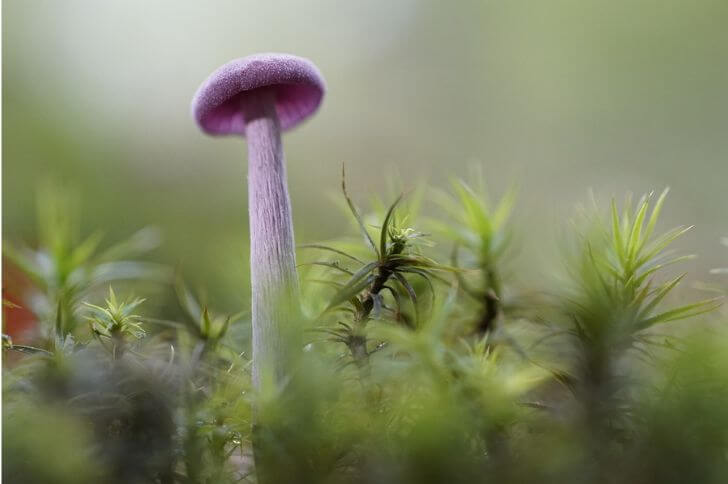
Looking for a beautiful flat topped mushroom to photograph? A member of the genus laccaria, the amethyst deceiver is one of the most stunning mushrooms in North America.
One of its distinguishing features is its vibrant amethyst color, which fades over time and can sometimes make it difficult to spot among the forest floor. These mushrooms are relatively small in size, typically growing between 1-3 inches in diameter, with a flat or slightly convex cap that becomes funnel-shaped as it matures.
Amethyst deceivers are commonly found in deciduous and coniferous forests, often appearing in large groups or scattered across the ground.
They have a mycorrhizal relationship with trees, forming mutually beneficial associations where they exchange nutrients with their host plants. As saprotrophs, they also play an important role in decomposing organic matter and recycling nutrients back into the ecosystem.
Despite their alluring appearance, these mushrooms with flat caps are not considered edible due to their strong peppery taste and tough texture. However, these mushrooms serve as an essential food source for various woodland creatures.
Overall, the Amethyst deceiver is a captivating mushroom that adds beauty and diversity to our natural environments while playing crucial ecological roles behind the scenes.
5. Amanita phalloides (Death Cap)
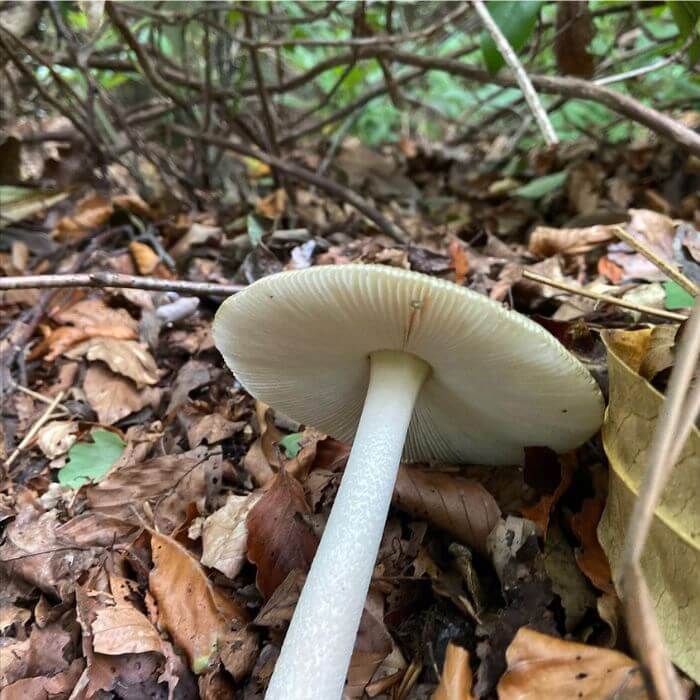
source:nickvadasz
Characterized by its flat-topped cap, the Amanita phalloides or death cap mushroom is another type of common flat-topped mushroom. Its cap can range in color from light olive green to yellowish-brown.
This species can grow up to 6 inches tall and has gills underneath the cap that are white when young but become dark as they mature.
Like its name suggests, this is a mushroom you should avoid. Death caps are inedible.
6. Omphalotus illudens
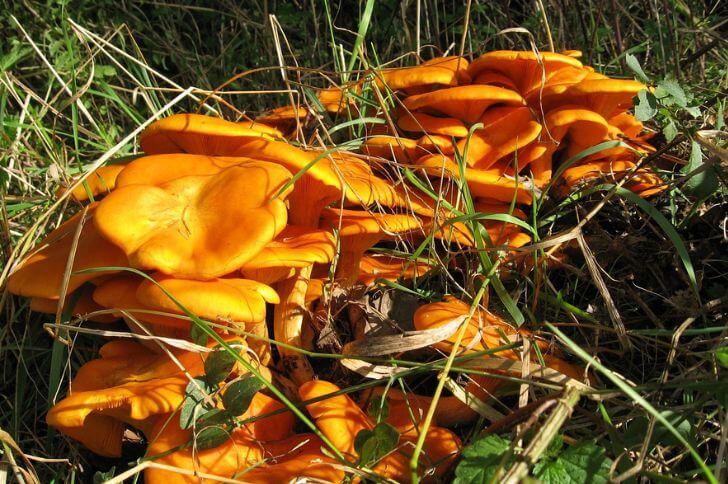
If you live in a state where chanterelles thrive, you’ve probably come across omphalotus illudens. Commonly called the jack-o’-lantern mushroom, this species belongs to the family Omphalotaceae.
These flat-topped mushrooms are easily recognizable due to their vibrant orange color and gilled caps. Found widely across North America, these fungi typically grow in clusters on stumps around the same time chanterelles fruit.
One of the most intriguing features of jack-o’-lanterns is its bioluminescence. Emitting a greenish-yellow light that can be seen in darkness or low light conditions, these mushrooms create an enchanting glow in the woods.
This phenomenon occurs due to a chemical reaction involving luciferin and luciferase enzymes within the mushroom’s cells.
However, despite its chanterelle-like appearance, it’s important to note that omphalotus illudens are inedible.
7. Fragile dapperling
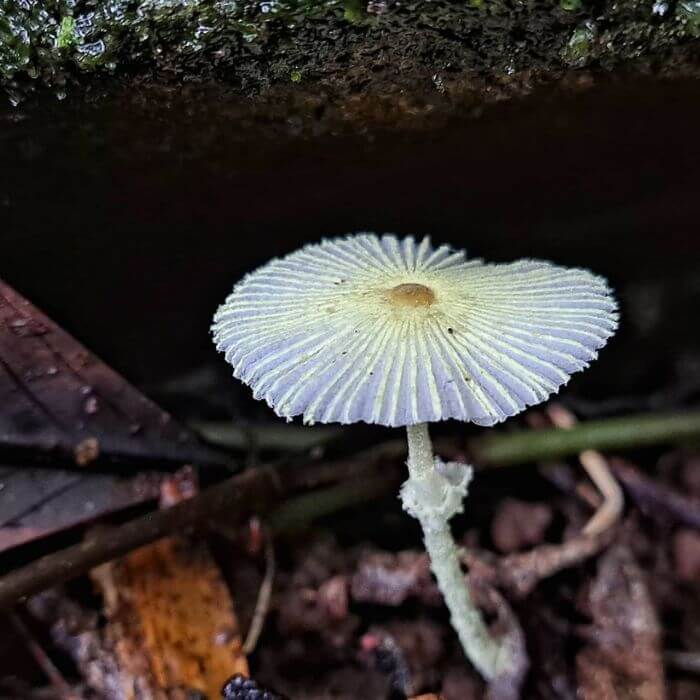
source: oreotung
Leucocoprinus fragilissimus, commonly called the fragile white dapperling, is characterized by its delicate and easily breakable fruiting body, which has a flat cap that ranges in color from pure white to pale yellow
The cap typically measures between 1-2 inches in diameter and is convex when young but becomes flatter with age. The gills underneath the cap are initially white but turn yellowish as the mushroom matures.
This species can be found growing solitary or in small groups on decaying organic matter such as leaf litter or dung.
This flat top mushroom is considered edible but not highly regarded for culinary purposes due to its fragile nature and lack of flavor.
Overall, this small white flat mushroom is an intriguing mushroom species with its delicate appearance and ecological significance.
While it may not be sought after for its culinary value, it still contributes to the natural processes occurring within ecosystems by aiding in decomposition and nutrient cycling. Its presence adds beauty to woodland areas where it can often be spotted among leaf litter or other decaying organic matter.
Final Thoughts:
Flat topped mushrooms are fascinating and can be found in various parts of the world. Their distinctive appearance, with flat caps, make them easily distinguishable from other mushrooms.
While some are edible, other mushrooms with flat caps are not edible. Ensure you can properly identify a fungus before picking. So next time you stumble upon a flat topped mushroom during your nature walks, take a moment to appreciate its beauty and consider the hidden wonders it may hold within.
sources:
Hi There,
My name is Jenny. I’m the Chief Editor at Try Green Recipes and besides making yummy and healthy foods for my kids, grandkids, and friends. I’m new to the blogging world but I believe what I have to share is unique and will bring joy to your home. If you are adventurous and want try something tasty, let’s get started.

